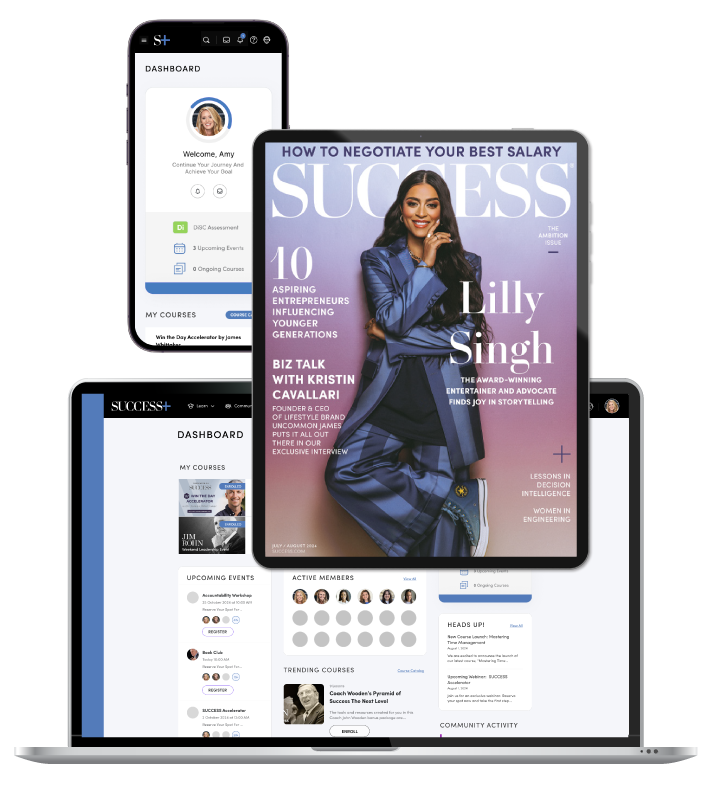The Enneagram is a personality tool that can be helpful in a variety of contexts. When it comes to the Enneagram at work, it can help build better teams and contribute to individual success. It can help people understand the core motivations behind how they think, communicate and solve problems at work. Recognizing and embracing different personality types isn’t just a nice-to-think-about concept. By exploring it, organizations can foster emotional intelligence, improve collaboration and much more.
In this guide, we’ll break down what the Enneagram is and explore the benefits of the Enneagram in the workplace. We’ll walk you through each of the nine Enneagram types at work. Plus, find real-world ways that HR professionals and business leaders are using it to create stronger, more human-centered teams.
What Is the Enneagram and How Does It Work?
Two people who work in the same place–or maybe even hold the same position–will still likely communicate and problem solve differently. These differences can be an advantage when approached from a thoughtful, knowledgeable perspective.
Accepting different personalities on your team allows for different opinions and solutions. It fosters innovation and ensures processes don’t get stagnant. It also allows for different viewpoints. Through acceptance and understanding, the workplace culture can bloom with creativity and collaboration.
But how do you begin to understand your teammates and colleagues? This is where the Enneagram at work comes into play. This is so much more than a personality quiz. In recent years, it’s been utilized more and more by HR leaders and managers to understand employees on a deeper level. When used appropriately, it can heighten emotional intelligence and improve productivity and culture.
Exploring What Drives People
While some assessments focus mainly on behaviors and external traits, the Enneagram is different. It explores what drives people. It also uncovers what activates creativity and how to tap into ambitions and raw talents. Examining employees through this lens strengthens team dynamics. It can also create a more resilient workforce.
“The Enneagram is an excellent tool for workplace teams because it digs deeper than other personality tests,” says Chantal Hayes, a licensed clinical mental health counselor supervisor and CEO of Banyan Tree Counseling & Wellness and Banyan Integrated Health. “Instead of just telling you what someone does, it reveals why they do it, especially under stress. That’s where the real magic happens for team dynamics.”
A Personality Framework That Serves as a Tool for Growth
The Enneagram is a personality framework built around nine core types. Each of these is defined by a dominant motivation and fear. While people may share outward behaviors, the Enneagram goes deeper. It helps uncover the inner drives that shape how we lead, relate and respond to stress.
Each type includes:
- Key characteristics
- A core desire
- A core fear
- A specific emotional focus
- Distinct patterns of thought and behavior
It also maps how each type shifts in times of stress or growth. This can give individuals and leaders a fuller understanding of emotional and interpersonal dynamics.
Ehab Youssef, a licensed clinical psychologist, mental health researcher and writer at Mentalyc, cautions that “the Enneagram is a tool for growth, not a label or box. It should never be used to stereotype or make assumptions about capability.”
If you’re a leader or manager, you could begin with testing your team’s Enneagram knowledge. This can show how much they already understand and help you determine how much you need to guide them.
The Benefits of Using the Enneagram at Work
The benefits of the Enneagram in the workplace aren’t about assigning personality labels. When used with intention, this dynamic tool can have powerful benefits. It can build emotional intelligence and sharpen leadership communication. In addition, it can help teams resolve tension with empathy rather than assumption.
“Tools like the Enneagram give leaders and teams a framework to talk about tension, feedback and growth without making it personal,” says Tracy O’Malley, a world-renowned Enneagram expert and host of The Enneagram Edge podcast. “When people feel understood, they stop playing defense and start showing up fully.”
Here are some ways organizations benefit from using the Enneagram at work:
- Improved communication across styles and preferences
- Personalized onboarding and performance feedback
- Conflict resolution based on core motivations, not surface behavior
- Self-awareness and leadership development
- Team balance and role fit, especially when navigating change or growth
Hayes has seen this firsthand in her own organization. “We’ve used these insights to build our team of 30 plus people, and I believe it’s one of the reasons why our turnover is so low. People feel understood, which makes them want to stick around.”
Understanding the 9 Enneagram Types at Work
To benefit from utilizing the Enneagram types at work, you need a framework for each of the nine types. Below, we explore each type, including motivators, workplace behavior and potential blind spots.
Type One: The Perfectionist
Motivated by: Being ethical and right
Fears: Being wrong
Type Ones are principled and precise. They’re drawn to routine, love to-do lists and can tackle tedious work without complaint. But their black-and-white thinking may cause frustration with less detail-oriented colleagues. They hold themselves and others to high standards and can struggle with self-criticism when mistakes happen.
Ideal work environment: Clear expectations and consistent accountability
Productivity tip: Aim for progress over perfection
Watch out for: Procrastination disguised as quality control
Type Two: The Helper
Motivated by: Being needed
Fears: Rejection
Type Twos are relationally attuned and quick to offer support. They’re thoughtful, being the first to remember birthdays, bring in baked goods or stay late to help a teammate. But they can overextend themselves or rely on external approval for validation.
Ideal work environment: Collaborative, with emotional connection
Productivity tip: Schedule time for uninterrupted focus
Watch out for: Burnout from boundary-blurring
Type Three: The Achiever
Motivated by: Appearing successful
Fears: Public failure
Type Threes bring ambition, a polished finish and plenty of momentum to their team. They’re excellent presenters and love measurable goals. But they may struggle to slow down, delegate or reveal vulnerability.
Ideal work environment: Goal-oriented with public wins
Productivity tip: Celebrate progress, not just outcomes
Watch out for: Overwork that hides insecurity
Type Four: The Individualist
Motivated by: Expressing uniqueness
Fears: Being ordinary
Type Fours value authenticity, emotional depth and creativity. They challenge surface-level thinking and bring originality to their work. When misunderstood, they may become withdrawn or moody.
Ideal work environment: Space for creative expression
Productivity tip: Use rituals to ground focus
Watch out for: Emotional spirals that derail timelines
Type Five: The Thinker
Motivated by: Knowledge and competence
Fears: Being seen as unprepared or incapable
Type Fives are observant, reflective and internally resourceful. They prefer working independently and bring depth to research-heavy or analytical roles. Their quiet nature can be misread as aloof.
Ideal work environment: Autonomy with minimal interruptions
Productivity tip: Set a clear endpoint for analysis
Watch out for: Detachment from team collaboration
Type Six: The Guardian
Motivated by: Security and stability
Fears: Uncertainty or betrayal
Type Sixes are reliable and loyal teammates. They are systems-oriented and excellent at spotting risks and preparing for multiple outcomes. However, they may over-rely on rules or become paralyzed by doubt.
Ideal work environment: Predictable and principled
Productivity tip: Limit time spent on “what-if” planning
Watch out for: Decision fatigue
Type Seven: The Enthusiast
Motivated by: Enjoyment and freedom
Fears: Boredom or being trapped
Type Sevens bring energy, ideas and spontaneity to the team dynamic. They’re natural brainstormers and great at rallying teams, but they may avoid difficult conversations. They’re also prone to leaving projects unfinished.
Ideal work environment: Dynamic with room to explore
Productivity tip: Prioritize follow-through
Watch out for: Distraction disguised as multitasking
Type Eight: The Boss
Motivated by: Independence and strength
Fears: Being controlled
Type Eights are confident and direct, and they are protective of their teammates. They excel in crisis and are quick to determine the best strategy when time is of the essence. This mission-driven attitude can sometimes be intimidating to others. Remember, Type Eights value truth over comfort.
Ideal work environment: High-stakes with autonomy
Productivity tip: Delegate with trust
Watch out for: Micromanaging or dominating
Type Nine: The Peacemaker
Motivated by: Harmony and connection
Fears: Conflict
Type Nines are adaptable, steady and always inclusive. They’re gifted at creating calm environments and seeing all sides to every issue. But they may avoid asserting opinions or ignore building tension in an attempt to keep the peace.
Ideal work environment: Calm, consistent and inclusive
Productivity tip: Tackle the most important task first
Watch out for: Avoidance that masquerades as flexibility
How to Use the Enneagram to Improve Team Dynamics
The Enneagram in business isn’t a shortcut. Rather, it’s a long game of building emotional understanding and creating space for differences. It also contributes to leading with greater intentionality.
“Enneagram-based leadership can… improve onboarding and professional development,” says Niloufar Esmaeilpour, a registered clinical counsellor and founder of Lotus Therapy & Counselling Centre. “By tailoring communication, goal setting and feedback to suit different Enneagram types, team leaders create an environment where people feel understood and appreciated.”
Here are a few strategies HR professionals and managers can adopt to bring the Enneagram at work into team development:
- Personalize onboarding to fit how individuals learn and process feedback.
- Use Enneagram-based workshops to strengthen communication across styles.
- Design conflict resolution protocols that acknowledge emotional triggers.
- Create team maps to balance different types and avoid groupthink.
- Lead with empathy, not typecasting; treat the Enneagram as a lens, not a label.
“At its core, the Enneagram isn’t just a personality typing system,” says Youssef. “It’s a map of motivation. It doesn’t just describe what people do but why they do it. That’s what makes it so effective in a team setting.”
Final Thoughts on the Enneagram and Work
When approached with empathy and care, the Enneagram and career development can go hand-in-hand. Leaders should use the Enneagram in the workplace to understand their team better. It can be a tool to create a space where everyone is seen, heard and supported. It can even be utilized to pick out individualized gifts to thank your team for a job well done.
“For leaders and HR professionals who wish to create not only successful teams but also emotionally intelligent teams, the Enneagram is a powerful foundation,” says Veronica West, psychologist and founder of My Thriving Mind.
“When employees feel understood not just for what they’re doing, but why they’re doing it, they’re more likely to be productively engaged and less likely to feel misunderstood or underappreciated,” she adds.
“The key is to use the Enneagram not as a rigid system or a recruitment tool, but as a means to develop empathy, reduce miscommunication and build stronger and more resilient teams,” Esmaeilpour says.
Consider the Enneagram at work as a powerful tool to be your best and build stronger work relationships. Used thoughtfully and intentionally, it can empower individuals and teams towards workplace success.
This article was published in August 2020 and has been updated. Photo by JLco Julia Amaral/Shutterstock











